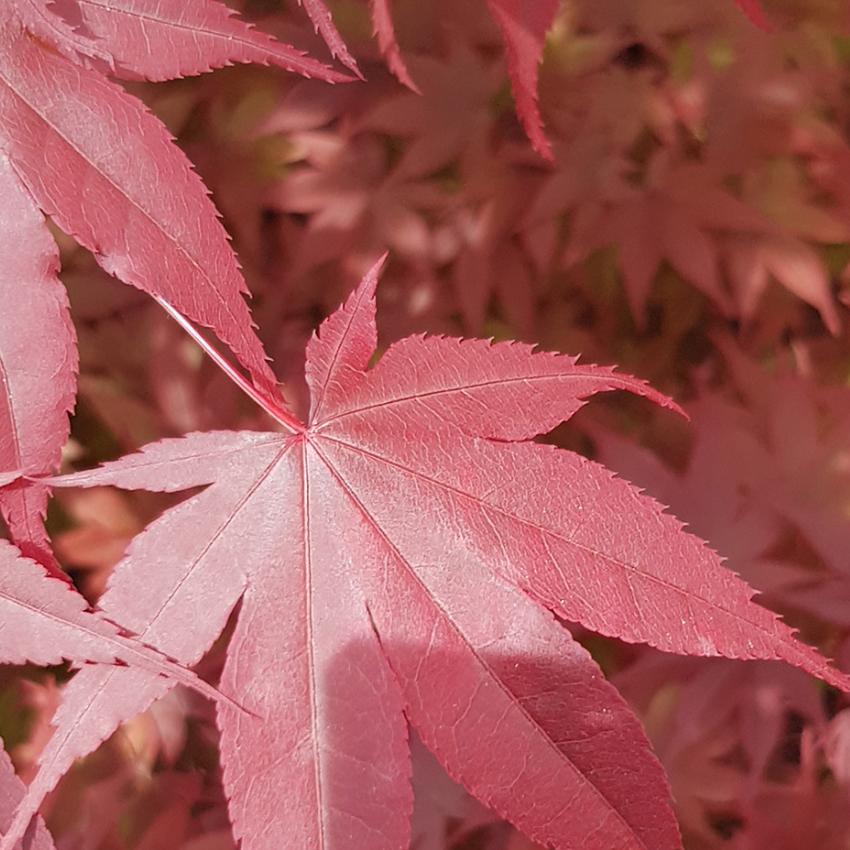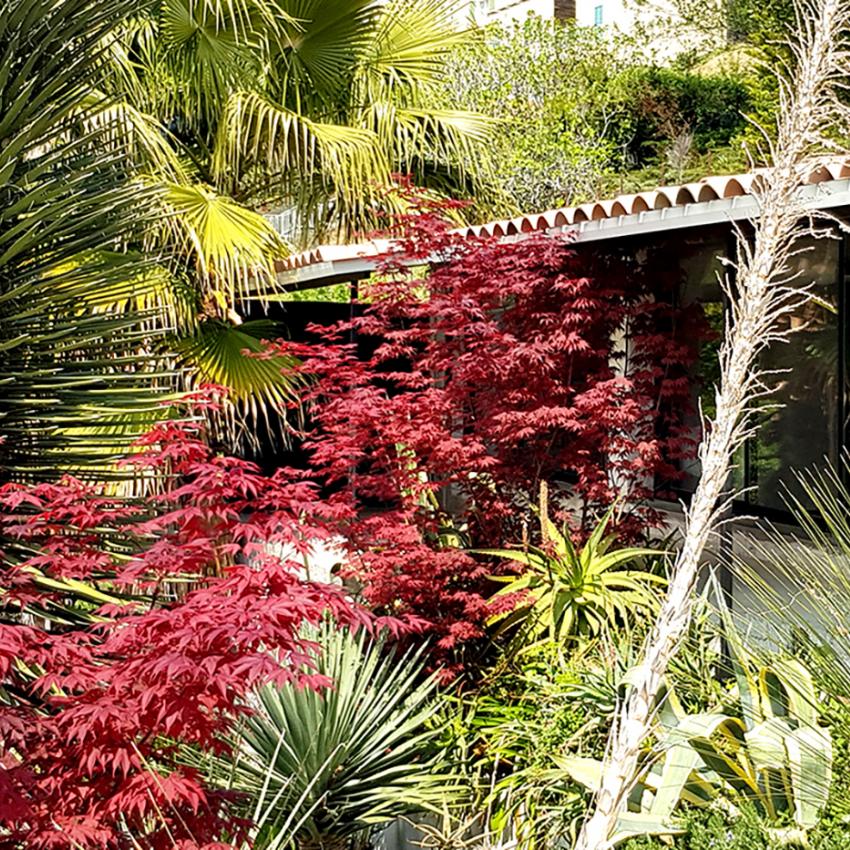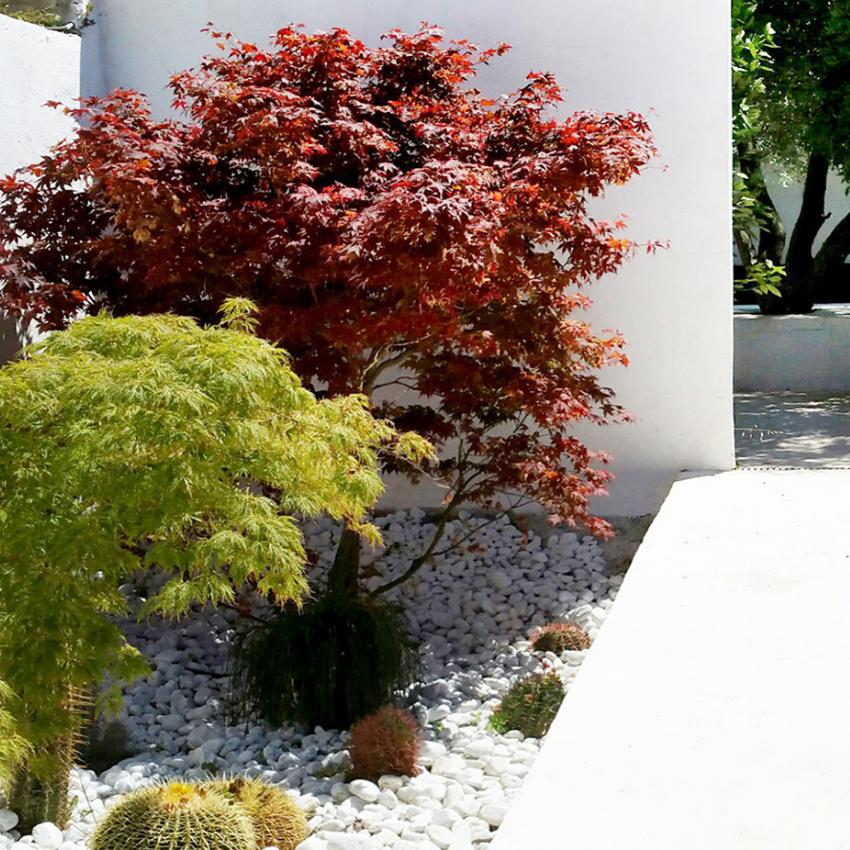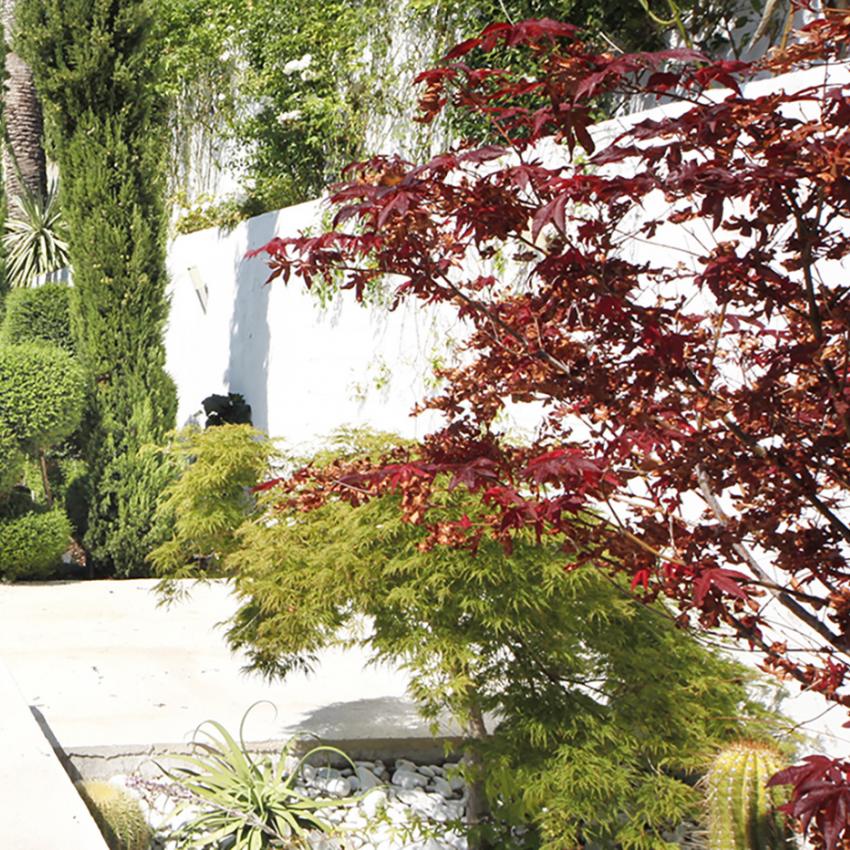



Red Japanese Maple
Acer palmatum ‘Fireglow’
Acer palmatum, called Japanese Maple or Smooth Japanese Maple (Japanese: irohamomij) is a species of woody plant native to Japan, North Korea, South Korea, China, eastern Mongolia, and southeast Russia. Many different cultivars of this maple have been selected and they are grown worldwide for their attractive leaf shapes and colors. They are highly sought after and are relatively costly trees given their size.
Japanese Maple has been grown in temperate areas around the world since the 1800s, but had been cultivated in Japan for centuries. The first specimen of the tree reached England in 1820. When Swedish doctor-botanist Carl Peter Thunberg traveled in Japan late in the eighteenth century, he secreted out drawings of a small tree that would eventually become synonymous with the high art of oriental gardens.He gave it the species name palmatum after the hand-like shape of its leaves. This would hardly surprise the Japanese who for centuries referred to their group of maples as kaede and momiji, references to the 'hands' of frogs and babies, respectively. For centuries Japanese horticulturalists have developed cultivars from maples found in their country and nearby Korea and China. They are a popular choice for bonsai enthusiasts and have been used throughout the history of the art.
Today numerous cultivars are readily available commercially and are a popular item at garden centres and other retail stores in Europe and North America. Red-leafed cultivars are the most popular, followed by cascading green shrubs with deeply dissected leaves.

Find the plant...
